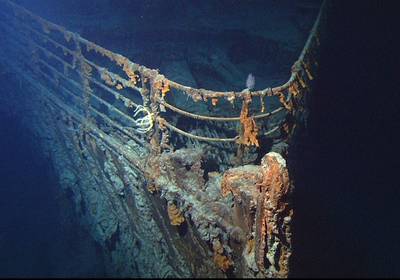Shipwrecks Pose US Sea Pollution Threat
New NOAA report presented to the US Coast Guard examines national oil pollution threat from shipwrecks in US waters.
The report finds that 36 sunken vessels scattered across the U.S. seafloor could pose an oil pollution threat to the nation's coastal marine resources. Of those, 17 were recommended for further assessment and potential removal of both fuel oil and oil cargo.
The sunken vessels are a legacy of more than a century of U.S. commerce and warfare. They include a barge lost in rough seas in 1936; two motor-powered ships that sank in separate collisions in 1947 and 1952; and a tanker that exploded and sank in 1984. The remaining sites are 13 merchant marine ships lost during World War II, primarily along the Atlantic Seaboard and Gulf of Mexico.
The report, part of NOAA's Remediation of Underwater Legacy Environmental Threats (RULET) project, identifies the location and nature of potential sources of oil pollution from sunken vessels. Knowing where these vessels are helps oil response planning efforts and may help in the investigation of reported mystery spills--sightings of oil where a source is not immediately known or suspected.
"This report is the most comprehensive assessment to date of the potential oil pollution threats from shipwrecks in U.S. waters," said Lisa Symons, resource protection coordinator for NOAA's Office of National Marine Sanctuaries. "Now that we have analyzed this data, the Coast Guard will be able to evaluate NOAA's recommendations and determine the most appropriate response to potential threats."
"The Coast Guard is pleased to receive these risk assessments from our partner agency NOAA and looks forward to our continued coordination on the matter of potential pollution associated with sunken vessels in U.S. waters," said Capt. John Caplis, the Coast Guard's chief of marine environmental response. "Coast Guard federal on-scene coordinators receiving the risk assessments will carefully review the data and incorporate it into their area contingency plans."
In 2010, Congress appropriated $1 million for NOAA to develop a list of the most significant potentially polluting wrecks in U.S. waters, including the Great Lakes, specifically addressing ecological and socio-economic resources at risk. Those funds were not intended for oil or vessel removal.
To view the report, 2012 Risk Assessment for Potentially Polluting Wrecks in U.S. Waters, click here.















